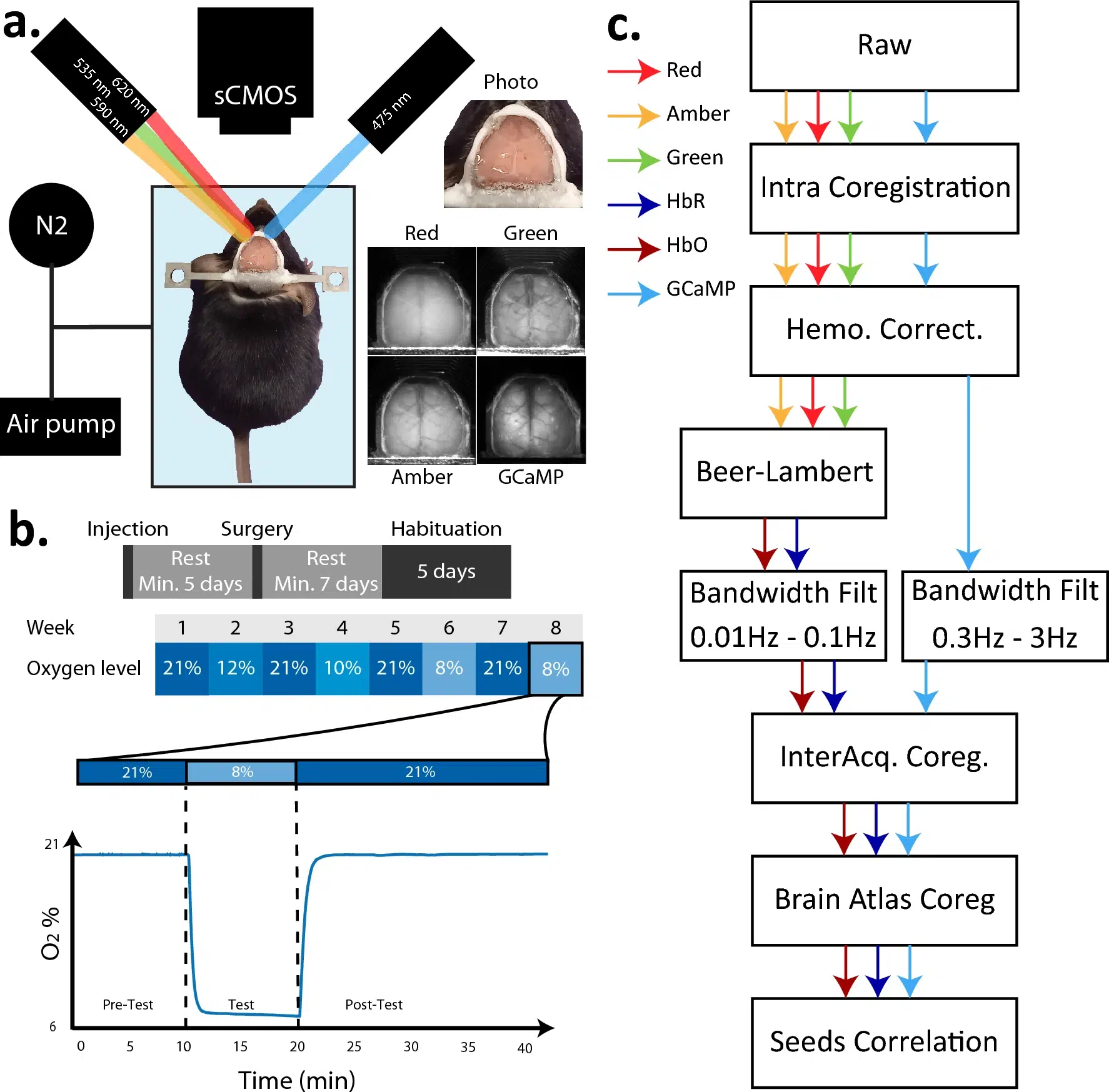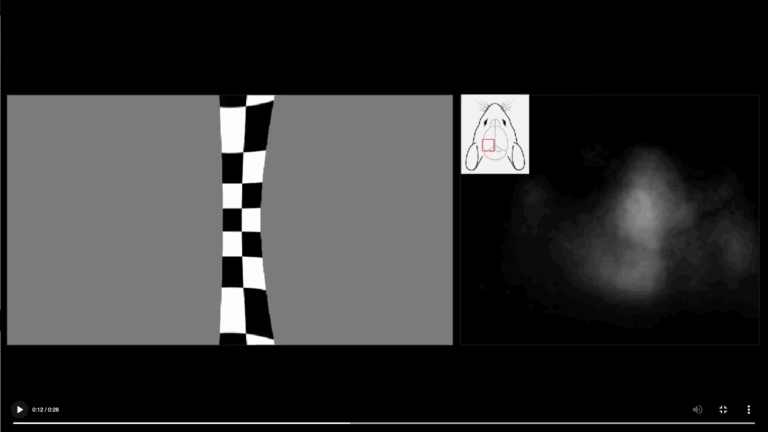
MediLumine Launches Full Spectrum CRO Services
We are pleased to announce the expansion of our contract research services into a full spectrum model that unifies imaging and omics platforms within a

The study investigates changes in resting-state networks (RSN) and hemodynamics during acute global hypoxia using mice imaged at different oxygen levels over ten weeks, with hypoxic and normoxic acquisitions interspersed. Simultaneous GCaMP and intrinsic optical imaging track neuronal and hemodynamic changes, revealing a global increase in both HbO and HbR during hypoxia. Despite blood oxygen saturation levels returning to baseline within 10 minutes, changes in neuronal RSN persist, with connectivity between anterior and posterior brain areas decreasing when measured with GCaMP and increasing when measured with HbO, suggesting potential neurovascular decoupling. The study underscores the importance of understanding the effects of hypoxia on brain function, elucidating complex interactions between neuronal activity and hemodynamics under acute hypoxic conditions.
The study in Nature Scientific Reports conducted by Bakker et al. (2023) investigates alterations in resting-state networks (RSN) and hemodynamics during acute hypoxia, leveraging the LightTrack OiS200 mesoscope imaging system to refine neuroimaging accuracy by correcting GCaMP signals for hemodynamic fluctuations. The LightTrack OiS200 mesoscope imaging system, renowned for its precision and reliability, excels in capturing subtle neuronal dynamics amidst hemodynamic variability, enhancing data integrity by mitigating the confounding effects of hemodynamic fluctuations on GCaMP signals. This integration empowers researchers to glean nuanced insights into brain function, fostering breakthroughs in understanding brain dynamics under diverse physiological conditions. The adoption of the LightTrack OiS200 mesoscope imaging system transcends academic, medical, and biotechnology spheres, heralding a new era of neuroimaging precision and scientific excellence.


We are pleased to announce the expansion of our contract research services into a full spectrum model that unifies imaging and omics platforms within a

The visual system of mammals is organized so that each section of the visual field is processed by a corresponding region of the brain. This